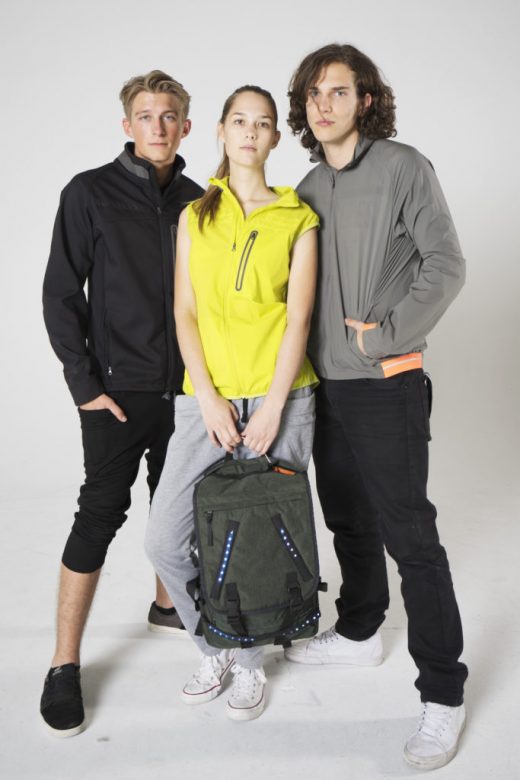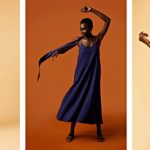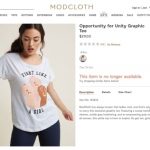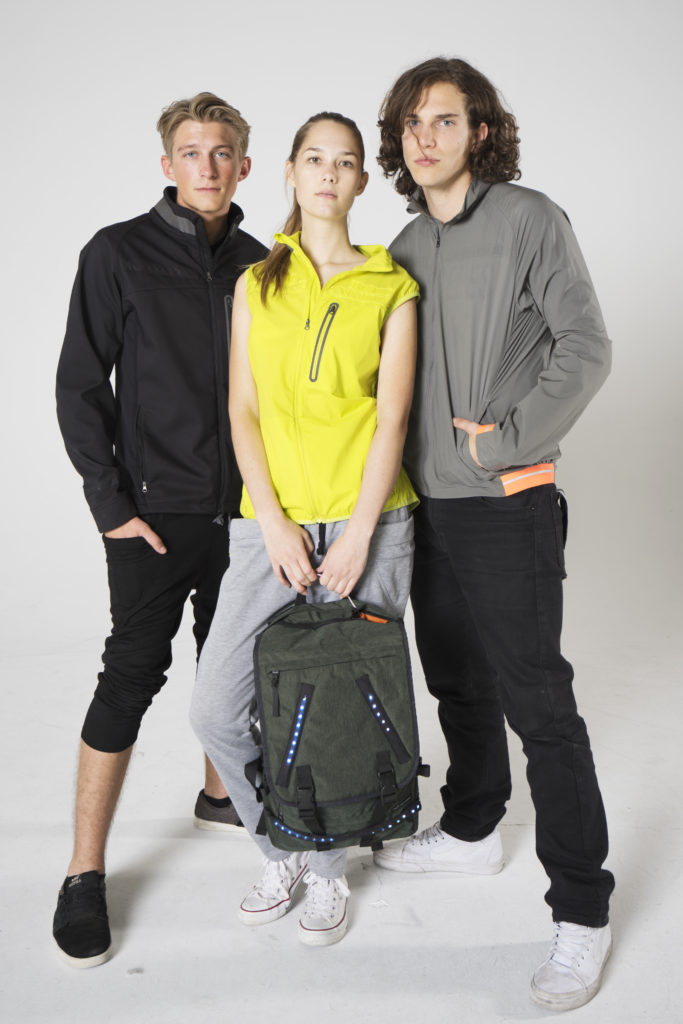Why is fashion a major challenge with smart clothing?
Why is fashion a major challenge with smart clothing?

Here at Readwrite — and our accelerator, ReadWrite Labs — we believe there’s a lot to learn about a new industry from the founders that are carving it out and leading the charge through innovative companies and products. We recently sat down with Jeremy Wall, Founder and CEO of Lumenus, for an interview on wearables and the emergence of smart clothing and textiles.
Q: Do you think mainstream consumers are ready for connected clothing?
A: Nope, simple as that—it really hasn’t hit an inflection point where the “mainstream consumers” are looking for it. Most of the benefits exist simply for these small niche markets right now at the professional level: athletes, artists, and workplace. However, the workplace is the key there—because it doesn’t matter if you “need it” but you may be forced to wear it as part of a uniform—this is where we are seeing initial adoption.
Q: What is the biggest hurdle holding back smart textiles today?
A: The biggest hurdle right now for the smart textiles specifically is price… We have the capability to include a litany of amazing features on the level of the textile itself, not just bulky electronics that are sewn or attached to the fabric—but actually the fibers and polymers themselves. However, we’re at the front-end of this amazing innovation. I studied at the NC State College of Textiles, where some of the leading research in the world is done. It’s just a fact that it’s kind of stuck in the labs at this point and not ready for mass market due to cost but also building on the last question—who really needs it right now, especially with that sticker price?
Q: How will the latest advancements in textile technology change the current value proposition for consumers?
A: Every day we read about new technologies that are turned into companies that really just don’t have the legs to stand on. This is where my central notion of “collaborative innovation” is pivotal to the growth of our market. By combining the resources and abilities of smaller startups with larger incumbent market leaders we will see a huge influx in a number of beneficial products making it to market instead of just “runway concepts destined to remain tech-couture.”
This ability to pass by initial adopters to a larger audience (think Under Armour and HTC collaborating) gives a HUGE amount of accessible data because now you’re able to get at the millions of Under Armour’s existing clients to harness all that data—and it’s the big data play that allows all of it to be aggregated and become actionable, contextualized, and optimized for mass public as opposed to individual users. I think that the biggest piece is going to be the proliferation of the IoT and combining what would have previously been completely diaspora of data and users to a more unified source where it can be combined for all users benefit.
Q: What corporations are embracing the smart textile movements and which ones are falling behind?
A: Google has always been seen as a market leader regardless of sector and they’re not shying away from smart-clothing either, with Project Jacquard. However, they’re doing it right, by partnering with Levi’s to create a collaborative innovation where both parties put in their expertise where the whole is greater than the sum of its parts.
Be honest, outside of the Bay Area would anyone ever buy a “Google Jacket?” No. And would you really buy a piece of hardware technology from the denim company Levi’s? No. That’s why combining these two into one product is an example of companies doing it right. However, you have to look at Athos as the 500-pound gorilla in the realm of smart-clothing right now and they’re struggling to figure out exactly who their customer is and how to maximize the amazing technology they’ve built—but doing it all on their own has held them back from what they could have done through meaningful partnerships, building a brand is extremely hard but joining forces with an existing brand is actually really easy, if they’re the right partner.
You’ve got to look at the work Kevin Plank is doing at Under Armour and commend them, it hasn’t been their own internal innovation but it’s been the foresight to see the right markets and acquire the companies that will accelerate their path to being a market leader in tech—both hardware and software. However, you look at companies like Nike with the failed fitness tracker and have to assume that Tinker Hatfield and the E.A.R.L. isn’t the only technology they’re working on internally… but once they release it how will the market respond is the real question, because it’s all been behind closed doors, while Under Armour is the first one to let you know when something is coming down the pipeline. (With future girl as the example of their CGI team going a bit overboard, and actually setting themselves up for over-promise under-deliver because that technology is 20 years out.)
Q: Is being fashionable enough? What do consumers really want from a wearable tech product?
A: It’s tough out there for a tech company to know great design and but it’s near impossible for them to know ‘fashion’ which is more than just good design but the psychology of trends with fit, function, and style. Fashion isn’t enough for even the fashion industry because it’s so cyclical yet hard to predict what will land when. When you add technology to that equation it almost feels like a gimmick, which is the last thing any company wants to be seen as producing frivolous gizmos for the sake of it.
However, people need real contextual insights from their wearables that lead to actionable guidance and feedback. This is where it has to be designed well, but there needs to be core function that is more than just beautiful design but benefits that truly improve the day to day of customers. Again, I think a lot of this adoption will be spurred by workplace and then applied to the consumer.
Q: Which enterprise industries have the most to gain from adopting wearable tech and smart clothing?
A: High-risk vocational workers have the most to benefit—my company Lumenus started with the consumer as our publicly facing market—but always knew that the workplace was where we wanted to be. When you talk about trying to make safety products it’s hard to convince the consumer to purchase because safety is inherently “uncool.” Just look around at how many people wear a helmet on their own volition.
However, you’ve never seen someone be too hip to wear a helmet on a job site because they’ll get fired. This forced adoption is the start, but it’s the actual industries that will see improvements from the safety, productivity, accountability, efficiency, and cost savings. Augmented Reality (AR) is a great example, really we don’t see AR in use by the average person outside of social media filters. However, companies have been using AR in warehousing, heads-up displays for firefighters, and even agriculture for quality checks and repairs in the field.
Q: What has been your biggest challenge while founding Lumenus?
A: The biggest challenge has been finding the right partners, when you’re working in such a nascent industry there are no market leaders for components, assembly, or even distribution. So you have to find those that are looking forward, far forward, because anyone who is just trying to play catch-up to the buzz words they heard (May 30, 2017) is already behind. It’s been tough for us to find reliable suppliers for our needs because they can’t just be a small part of our supply chain when you’re trying to create something brand new—they have to be a partner. Identifying the partners who truly understand your vision not just for generation 1 or 2 of the product but for the larger solution that you’re trying to accomplish.
For Lumenus, that mission is “How do we make safety ubiquitous and inherent for all people” which might sound like a grand vision but it’s truly what we want to accomplish and so we can’t just find an LED supplier who likes lights, or a PCB manufacturer who wants to get a paycheck—but finding partners that share that vision and set of values mean that they push harder on their own to bring to market products that were beyond their own initial scope of capability—simply because they know this is the future and want to be part of writing that story.
Q: Which companies are doing it right? What products have impressed you?
A: Without going into my full list of companies that I love — or speaking negatively on some of the majors that have really made some mistakes — I’ll point out a two that are fairly unknown that I just think are moving the whole industry in the right direction and doing great work.
MYO: They are a smaller company and one that I supported on Kickstarter back in 2015 because they were based out of my hometown and had a good mission. Today they’ve got a vision of being the future of gesture control. It’s this larger vision that has been organic in its growth since inception that identified pain points and used research and market feedback to hone in on that vision. They have made SDKs available to all sorts of operating systems and a developer portal that allows anyone to build on what they’ve created—which takes the collaborative innovation and combines it with open-source of the crowd; which to me is the ultimate goal.
StrongArm Technologies: I’ll be honest when I say I don’t know if this company will be the one to dominate the market, but they have got a heck of a head start on an exciting market—exoskeletons. What they’ve done so well is start with a core market of the “industrial athlete” and with that focus had an addressable market immediately, although it doesn’t mean that market will adopt. They’ve got a good bit of momentum in a market that will balloon with competitors as we continue to see companies work on human longevity and “augmented superpowers.”
Two other companies for honorable mention in the workplace wearable safety are Proxxi — helping save workers from electrocution — and Kinetic — helping industrial athletes lift properly.
Lumenus is an alumnus of the ReadWrite Labs Accelerator program. ReadWrite Labs’ latest program, Alpha, is now taking startups of all stages looking to make a mark in IoT. Alpha includes desk space in our downtown San Francisco location and access to 175+ mentors, investors and corporate partners. Learn more here about our incubation program.
The post Why is fashion a major challenge with smart clothing? appeared first on ReadWrite.
(31)














